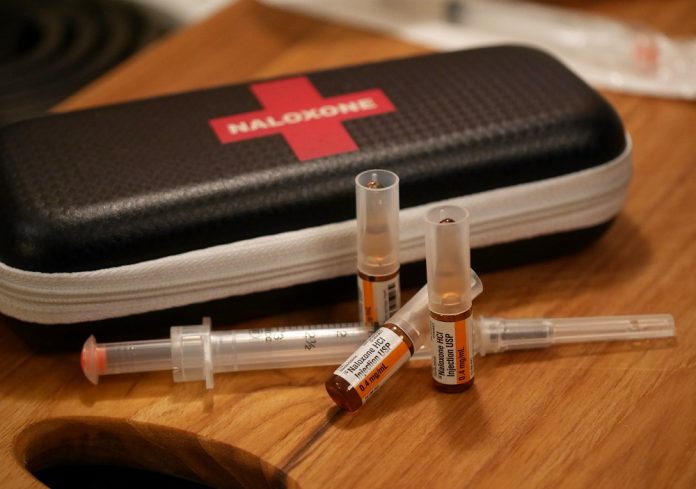The Haliburton, Kawartha, Pine Ridge (HKPR) District Health Unit’s harm reduction program is being challenged by a pandemic as the opioid crisis worsens.
Ontario’s chief coroner announced a 25 per cent increase in opioid-related deaths between March and May 2020, compared to the monthly median in 2019. In the HKPR district, preliminary data shows there have been 26 confirmed and probable deaths between January and August 2020, compared to 20 in all of 2019.
Haliburton Highlands OPP say they had two opioid-related deaths reported to them and that they investigated in 2020, after none in 2019.
Detachment commander, Liane Spong, said “that is of a big concern to us and a very important area we will continue to address with other partners involved in the overall drug strategy we work with.”
HKPR substances and harm reduction co-ordinator, Catherine MacDonald, said the pandemic has created more hurdles.
“One of the main messages from a harm reduction standpoint is not to use alone, whereas with the pandemic, we were asking people to isolate,” MacDonald said. “It was very challenging to try and get that information to people.”
The district has also had an upward trend in opioid-related emergency department visits for four consecutive years, from 74 in 2016 to 193 in 2019 according to Public Health Ontario. That trend has remained steady in 2020, with preliminary data showing 143 total visits between January-September.
MacDonald said she could not say whether local use is up during the pandemic. But she said supply chain issues have made the drug more toxic, potentially catching users unaware.
“What they’re using is not necessarily what they think they’re using, or the potency is not consistent,” MacDonald said.
She added partners, including emergency responders and other social services, have worked to address issues, such as a spike in overdoses in Lindsay.
“Community partners have really come together to ensure the needs of the clients are being met,” MacDonald said. “We’ve had an increase in outreach.”
In a November joint report, the chief coroner’s office, the Ontario Drug Policy Research Network and Public Health Ontario said there is a need for policies to address the rising numbers. They recommended access to harm reduction services, safer supply of drugs and other supports.
“These recommendations align with those made by national organizations and reflect the need to act quickly to provide adequate support for people who use drugs during current and anticipated future waves of this pandemic,” the joint report said.
New solutions
The health unit is taking some action to improve the data it collects about the opioid crisis. It received a $60,000 grant and is mandated to work on a data-sharing project on opioid abuse.
MacDonald said health units only have access to limited overdose data, that does not always allow for a timely response. With the initiative, emergency responders could provide data on overdoses they address, to give health units more to work with. Other community partners and members with lived experiences with substance abuse would also be able to submit information.
“It’s just trying to provide that better idea of what’s happening out there, because we know the numbers we’re getting from our hospital reporting is not the full picture,” MacDonald said. “With that information, we can then start to evaluate and look at trends … To be able to provide the relevant programs and services to the clients that need them.”
They hope to have the program ready in mid-2021. MacDonald said people need to see the humanity of drug users.
“Those people all have loved ones and family members and friends. It really does kind of impact everybody and it is a community issue,” she said. “That’s why it’s so important there’s a community approach.”





